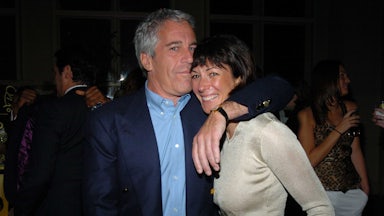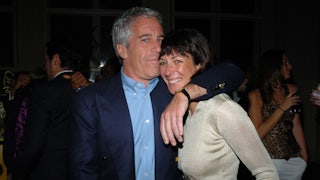Bernie Sanders seemed genuinely impressed by the size of his Los Angeles rally this weekend. “Unbelievable!” he declared upon reaching the microphone, “There are people half a mile away!” Moments later, he claimed 36,000 people were gathered before him, which constituted “the largest rally that we have ever had.”
If I were forced to paint with a broad brush—and at 36,000 people, a broad brush would be the instrument of choice—I’d say the crowd was a coalition of aging hippies and entertainment industry millennials. It was a massive crowd, to be sure, but nobody in the throngs surprised me by their presence. I did manage to find one woman who voted for Donald Trump in 2016 before voting for Biden in 2020. Prior to the rally, she confessed to me, “I’m so thankful [Bernie] is doing this kind of thing.”
This was a message I heard repeatedly from attendees: Those gathered were hoping for hope itself. Maybe even a determination to hope. Noah, a 28-year-old software engineer, told me while waiting in line, “I’m hoping for some answers about how to stay encouraged … I’m hoping this is a positive day and adds some clarity to the situation.” Moments later, his friend Amir chimed in, “Hope has to be cultivated, kind of. And so I think this is, I don’t know—maybe therapy?”
There were plenty of therapeutic aspects to the rally, like Joan Baez crooning “Imagine” or Neil Young, Maggie Rogers, and Baez singing “Keep on Rocking in the Free World.” But, despite Sanders’s promise that “we’re going to make our revolution with joy. We’re going to sing and dance our way to victory,” it was hard to characterize the crowd as hopeful, much less joyful.
Nevertheless, there was a determination among these 36,000 people. A 32-year-old screenwriter named Brett told me: “The only way I know how to go on is to hope and believe—and certainly it won’t happen if we don’t come here and try to work together and listen to each other.”
And there was that other kind of determination as well—the determination to unite a left wing in the place of an official institutional party organ that feels incapable of much at the moment. This was not the hardened Bernie crowd of 2016. I saw far more Harris-Walz shirts than Bernie 2020 shirts. That determination to hope has seemingly expanded the tent.
With that in mind, there’s a precarious challenge that Sanders—and, more importantly, his younger protégés who will carry this movement into the post-Trump era—are going to have to face. They have to unite a defeated half of the political spectrum and turn all of these determined sparks of hope into a structured movement.
Congressman Maxwell Frost, who spoke before Sanders, told me, “When something big happens in the country and people feel like something’s wrong, they’ll pick one of two things—sometimes it drives them further into apathy, sometimes it drives them into action. Organizers stand at that crossroad, and we help give people a political home. That’s what’s going on. We see this billionaire takeover of our country and now, as organizers, we have to stand at that crossroad and try to get people into something. Because there’s also a lot of people in this moment who will fall more into apathy and our job is to make sure that doesn’t happen.”
Naturally, this crowd was far from apathetic; indifference isn’t a strong enough force to get the average person to stand in the Los Angeles sun all day. Here, the heat was punishing: Sanders had to stop his speech several times to call medics into the crowd, as did several of the other speakers. At one point, the nurses’ union rushed off the stage to help. And their assistance was limited to the people they could see: If there really were 36,000 people at this thing, only about 10,000 of them were visible from the stage; the rest were on the other side of a treebank and the press riser.
That crowd stood in a dirt lot watching a Jumbotron. Beyond them, the streets were filled with people too, just standing. The mood became more vague as you worked your way through the outer reaches; in the further orbit, there was less of that sense of passion and determination. Still, even at the margins there was a consensus among the furthest-flung that this was, for reasons they couldn’t articulate, the place to be. Here on the periphery you’d encounter a hollowed-out dumpster with a younger group perched on the rim, just sitting, watching the event unfold on the big screen.
Again, 36,000 people—from the dumpster sitters to the gleeful crowd in the front bouncing a beach ball—is a hard number to do much but generalize. But this crowd showed up for something, and you could hear that among them. Onstage, you could see that something taking shape. During her oration, Congresswoman Alexandria Ocasio-Cortez connected local action—last week, an L.A. school superintendent turned away Department of Homeland Security officers attempting to enter his school—to the billionaire takeover of the government. “This moment did not come out of nowhere,” she said. “The destruction of our rights and democracy is directly tied to the growing and extreme wealth inequality that has been growing for years in America.”
This was where the nerve was most visibly touched: Attacks against the encroaching oligarchy received noticeably louder responses even than attacks against Trump. One union leader’s remark lambasting a “bone-spurred chicken-hawk commander in chief” didn’t receive quite the same boos as her line hitting the “one percent and the corrupt politicians who got richer out of the market manipulation we saw last week.”
There is a definite cohesiveness here. I got the feeling, as I did during the nascent stages of the Trump movement, that enough of these people are pissed off about the same things that they might actually do something. With enough cultivation, they might even do that radical thing where they all get together and vote. But what do they vote for?
Onstage, there was a clear passing of the torch and a message taking shape. Sanders’s argument was broad; he bashed “a corrupt campaign finance system” and Elon Musk generally. Both of those were ripe objects of criticism, but Ocasio-Cortez had a more finely tuned message. Like Sanders, she criticized the Democratic Party. While he criticized them for listening to “their billionaires,” she attacked specific practices like congressional stock trading and corporate lobbying, both of which are unpopular. Sanders attacked Trump’s billionaire coterie, but AOC proposed a longer game, telling the crowd, “If we are here to defeat [Trump], we must defeat the system that created him.”
The day before AOC appeared onstage in Los Angeles, I talked to Saikat Chakrabarti, who, with his group Justice Democrats, first supported AOC for Congress in 2018 and is now running against Nancy Pelosi, who is perhaps the loudest defender of congressional stock trading. Chakrabarti told me that Sanders has recognized that “there’s a lot of energy in this country for an economic populist, anti-corruption party” and pointed out that specific measures like banning congressional trading are overwhelmingly popular.
If that energy becomes a movement, and if that movement becomes a tent big enough to win elections, anti-corruption is the tentpole propping it up. Our present shit show of a health care system can be tied to billionaire health care CEOs, who, in this ideology, are corrupt by virtue of their obscene wealth alone. The horror of the Gaza genocide can be tied to AIPAC’s influence in Washington, which so often feels like naked corruption. The housing crisis too can be blamed on billionaires—again, corrupt by virtue of their wealth alone—buying up property just to drive up the price of living. Corruption is quickly becoming the through line, and the message from the Los Angeles stage hammered this home: Your life feels more difficult, more stressful today as a direct result of a deeply entrenched plutocratic perfidy.
Naturally, Elon Musk took his share of stick from the speakers; the president’s sidekick has spent the past few months slashing the social safety net and attempting to buy a Wisconsin Supreme Court election, all while his own businesses gobble up billions from the government. Musk is an animating enemy in this scene—vendors outside the rally were selling buttons reading DEPORT ELON TO MARS—but Elon’s role here is twofold. First, he’s a wildly unpopular poster boy for corruption. But more importantly, he’s gutting the very programs that keep Americans alive. As more and more Americans fall into despair, they’re going to go looking for hope and camaraderie with people who share these common enemies. This energy—this determined hope that 36,000 people had in Los Angeles on Saturday—is beginning to seem like the only thing on the market.










